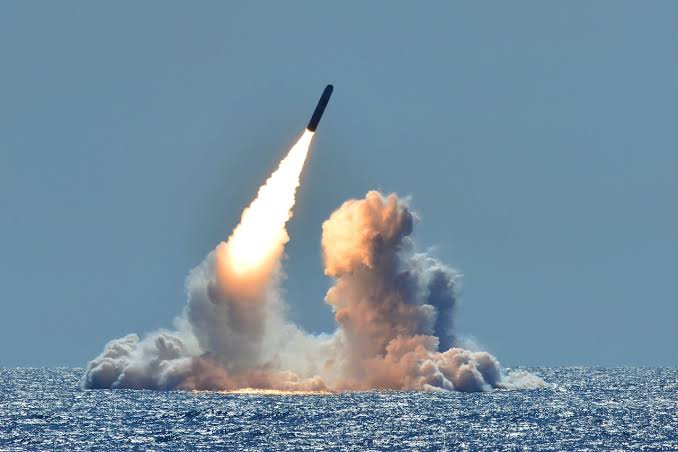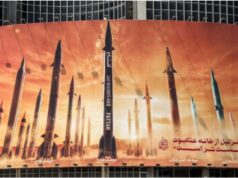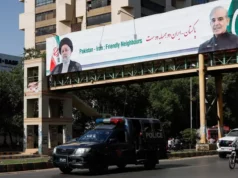Rocket Forces as a separate service for India, media madness only : absolutely no no

By
Colonel Awadhesh Kumar
The Missile Technology Control Regime (MTCR) was established in 1987 by G7 countries to prevent India from becoming a missile power. However in 2016, ironically India had to be invited and made a member of MTCR. India accepted the offer to keep a close eye on the existing members so that they do not carry out missile proliferation ( like they did nuclear proliferation with respect to Pakistan ). Today India has become a true missile power.
All missiles armed with nuclear warheads in the Indian inventory are under the Command and Control of the Strategic Forces Command,which is a Tri Service functional Command. The C in C Strategic Forces reports to the Chairman Chief of Staff Committee through HQ IDS. Control over launch of nuclear missiles is vested with the Nuclear Command Authority. It comprises a Political Council headed by the Prime Minister and an Executive Council headed by the National Security Advisor.
In all likelyhood, with creation of the post of Chief of Defence Staff,the NSA will provide the final CIVILIAN opinion to the Political Council and the CDS will provide the final military opinion. The Political Council will then authorise a nuclear attack when deemed necessary and order the Chairman Chief of Staff Committee and the NSA accordingly.
However apart from the nuclear capable Agni Series and Submarine Launched Sagarika nuclear capable ballistic missiles, India is also developing Surya and K series SLBM as the nuclear capable ICBMs. India has also developed and deployed a large number of tactical missiles carrying conventional warheads.
Nirbhay in fact is a long range, subsonic cruise missile that can be launched from various platforms and is capable of carrying both conventional and nuclear warheads to 1,500 km range. Prahaar is the Indian solid-fuel tactical ballistic missile to replace the Prithvi-I for conventional strikes. It is a quick-reaction, all-terrain, accurate battlefield support tactical weapon system with a range of 150 km.
The mobile launch platform carrying six missiles can be deployed in stand-alone or in canisters. Pragati a variant to replace Prithvi 2 has a higher range of 200km. A new conventional warhead missile, Pranash powered by single-stage solid propellant is likely to have a range of 350 km and will replace Prithvi3 / Dhanush.
Pralay is another canisterised tactical, surface-to-surface, conventionally armed short-range ballistic missile (SRBM) for battlefield use. It has a solid fuel rocket motor, and can perform mid-air manouvres. The high explosive warhead of 700kg or less can have fragmentation, penetration-cum-blast, and runway denial munitions. Its range is up to 500 km.
The Shaurya is yet another canister-launched Hypersonic surface-to-surface tactical missile with a range of 700 to 1,900 km, and capable of carrying a payload of 200 to 1,000 kg conventional or nuclear warhead.
The World famous BrahMos, a medium-range Ramjet Supersonic Cruise Missile can be launched from submarines, ships, aircrafts or be land based. Being the fastest supersonic cruise missile in the world,it is nearly Un interceptable. A new generation of BrahMos 2 missiles with 800 km range and an ability to hit protected targets with pinpoint accuracy are being developed. Plans are to eventually upgrade BrahMos missiles to a range of 1,500 km.
A hypersonic version BrahMos is also under development with a speed of Mach 7–8, to be ready for testing by 2024.
Pinaka is an Indian road-mobile multiple rocket launcher with a maximum range of 60 km for Mark-I enhanced version. An upgraded guided missile version of the system has been test-fired, with a range of 90 km.
The Chinese have a dedicated PLA Rocket Force (PLARF) as a separate Force. It had come into being in 1966 itself to control the nuclear armed missiles and was known as the Second Artillery Corps. It became The PLARF in 1984 as the 4th Service Branch of PLA. It controls China’s arsenal of land-based ballistic missiles—both nuclear and conventional. The PLARF is under the direct command of the Central Military Commission of the Communist Party because of political reasons.
Now some super ArmChair Marshals have started speculating that India too is inching closer to the setting up of an Integrated Rocket Force (IRF) as a separate Service !!! This is pure hogwash.
As per our doctrine, our ballistic missiles meant to carry our nuclear warheads are already under Command and Control of Strategic Forces Command. These ballistic missiles are part of the minimum credible deterrence strategy. They should not be mixed up with conventional missiles which Theatre Commanders and Army/ Air / Naval Component Commanders will need to fight their respective Operational battles.
Therefore to fight a conventional war our non nuclear missiles should not be under the Strategic Forces Command. Even a Tri Service Command on the lines of SFC is not recommend, as it will only hamper the initiative of the Theatre Commanders. Even though the ranges of cruise missiles are increasing, the conventional forces must remain with the field commanders. They will be used for service specific targets and the targets given by the chiefs of staff committee. All long-range cruise missile targets beyond standard artillery shells are normally decided at appropriate higher levels in each service.,
When Theatre Commands get formed, the conventional missiles must remain with the theatre. The mix of conventional and nuclear forces under a separate Service will be disastourous.
The Indian Army presently maintains these conventional missiles with Corps of artillery. The India Navy and IAF have dedicated units with cruise and stand-off missiles. Each service has its service-specific targets. These long-range artillery and cruise missiles are meant to attack in-depth targets, to suppress or neutralize the enemy. Bulk fuel storage, large ammunition dumps, major command and control nodes, critical enemy infrastructure could be targets.
In case of air force and navy, stand-off distances are also required so as not to expose own assets. For the air force, forward radars and airfields, and for the navy, port facilities could be targets. Long range and precision have made these missiles very potent.
Since we arealready moving towards theaterization, these missiles may be brigaded, with the brigades coming under Rcket & Missiles Divisions. Each theatre maybe allotted one division ( comprising 4x brigades and other elements ) under direct command of a Theatre and a division as GHQ reserves.
Earlier Air Defence Artillery and Army Aviation both were part of Corps of Artillery but now form separate Corps. So Yes, what can be discussed is whether to create a separate Rocket & Missiles Tri Service Corps and also a directorate general under HQ IDS to provide recruiting, training manpower planning, equpping and other required support.



